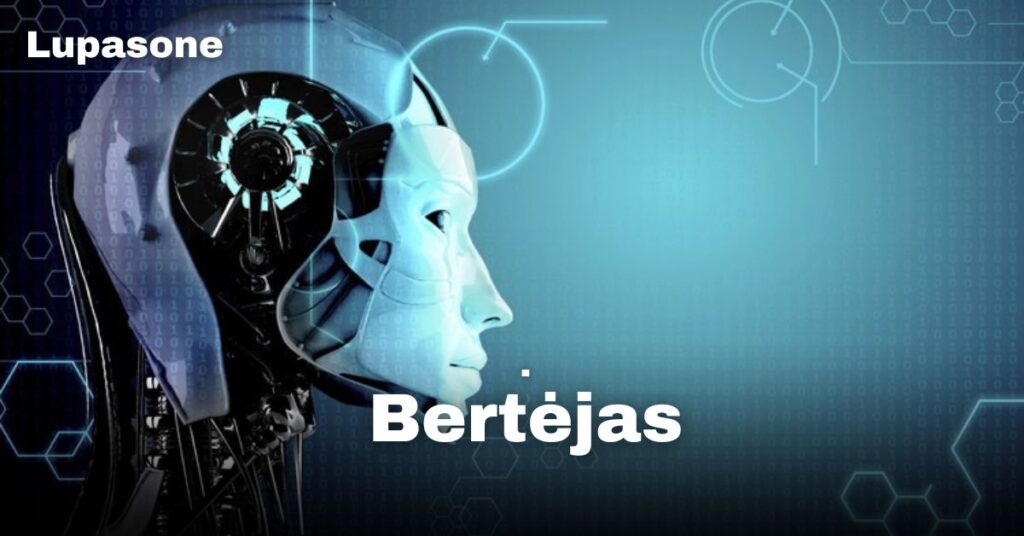
Contents
- 1 Introduction
- 2 What is a Bertėjas?
- 3 The Role and Responsibilities of a Bertėjas
- 4 Essential Skills for a Bertėjas
- 5 The Impact of Technology on Bertėjas
- 6 Challenges Faced by Bertėjas
- 7 Real-World Applications of Bertėjas
- 8 Frequently Asked Questions About Bertėjas
- 8.1 What qualifications do you need to become a bertėjas?
- 8.2 How do you determine the right translation style for a project?
- 8.3 What are the best resources for improving translation skills?
- 8.4 Can machine translation replace human bertėjas?
- 8.5 How does a bertėjas handle complex or technical subjects?
- 9 Conclusion
- 10 Takeaway Points
Introduction
In today’s interconnected world, effective communication is essential. The role of a bertėjas, a person who facilitates communication between different languages or cultures, has become increasingly important.
This guide will delve into the concept of bertėjas, exploring its meaning, responsibilities, the skills required, and its impact on global communication.
What is a Bertėjas?
Definition and Overview
A bertejas is a person who facilitates communication between different languages or cultures. The term is derived from the Lithuanian word “vertėjas,” which means “translator.” While the term is often associated with translation, it can also encompass the role of an interpreter.
Bertėjas play a crucial role in various fields, including literature, business, diplomacy, and media. They bridge cultural gaps and enable effective communication between people from different backgrounds.
Types of Bertėjas
There are several types of bertėjas, each with their own specific focus and skills:
- Literary Translators: These bertėjas specialize in translating literary works, such as novels, poetry, and plays. They need to be skilled in both languages and have a deep understanding of cultural nuances to accurately convey the original meaning and style.
- Technical Translators: Technical translators focus on translating specialized documents, such as manuals, patents, and scientific papers. They require a strong understanding of the subject matter in addition to language skills.
- Simultaneous Interpreters: These bertėjas provide real-time translation at conferences, meetings, and other live events. They listen to the speaker in one language and simultaneously translate their words into another language.
The Role and Responsibilities of a Bertėjas

Translation and Interpretation
A bertėjas plays a crucial role in facilitating communication between different languages and cultures. Their primary responsibilities include:
- Translation: Converting written or spoken text from one language to another.
- Interpretation: Providing a simultaneous or consecutive translation of spoken language.
In both translation and interpretation, it’s essential to maintain the original meaning, tone, and style of the text or speech.
Cultural Mediation
Beyond language skills, a bertėjas must also be skilled in cultural mediation. This involves understanding the cultural nuances and context of the source language and target language.
For example, a bertėjas translating a text from one language to another may need to adjust certain phrases or expressions to accurately convey the meaning in the target culture.
Research and Preparation
To effectively translate or interpret, a bertėja must have a strong understanding of the subject matter being discussed. This often requires extensive research and preparation.
Additionally, it’s important for a bertėjas to understand the target audience and tailor their translations or interpretations accordingly. This ensures that the message is conveyed clearly and effectively to the intended recipients.
Essential Skills for a Bertėjas
Language Proficiency
A bertėjas must have a strong command of both the source and target languages. This includes fluency in speaking, writing, and reading. Ongoing language education and practice are essential to maintain proficiency and stay up-to-date with language developments.
Cultural Awareness
Cultural understanding is crucial for effective translation and interpretation. A bertėja must be able to navigate cultural nuances and avoid misunderstandings. For example, idioms or expressions that may have different meanings in different cultures should be carefully considered.
Attention to Detail
Meticulous attention to detail is vital for ensuring accurate and effective translations. Even a small error can have a significant impact on the meaning of the message. Bertėja should carefully proofread their work and pay attention to grammar, spelling, and punctuation.
Adaptability and Flexibility
A bertėjas must be adaptable and flexible to handle various subject matters and translation styles. They should be able to adjust their approach based on the specific requirements of each project. Additionally, it’s important to be open to feedback and revisions to improve the quality of your work.
The Impact of Technology on Bertėjas

Translation Software and Tools
Computer-Assisted Translation (CAT) tools have significantly transformed the field of translation. These tools can help bertėjas improve efficiency, consistency, and accuracy. CAT tools often include features such as translation memories, terminology management, and quality assurance checks.
Some popular translation software used by bertėja include Trados, MemoQ, and SDL Studio.
Machine Translation vs. Human Translation
While machine translation technology has advanced significantly, human translators still play a crucial role in many applications. Machine translation tools can be helpful for basic tasks, but they often struggle with nuances, cultural context, and complex texts.
Human translators bring valuable expertise and understanding to the process, ensuring that translations are accurate, culturally appropriate, and convey the intended meaning.
Online Platforms and Freelancing
The rise of digital platforms has created new opportunities for bertėjas. Online marketplaces and freelancing platforms connect translators and interpreters with clients from around the world. This has made it easier for bertėja to find work and collaborate with clients remotely.
The trend towards remote work has also had a significant impact on the field of translation. Many bertėjas now work independently from home, enjoying greater flexibility and autonomy.
Challenges Faced by Bertėjas
Dealing with Ambiguities
One of the biggest challenges faced by bertėjas is dealing with ambiguities in the source language. Sometimes, words or phrases can have multiple meanings or be context-dependent. It’s essential for bertėja to carefully consider the context and use their knowledge of the language and culture to accurately interpret the intended meaning.
Time Constraints
The translation industry often involves tight deadlines, which can be challenging for bertėjas. Meeting deadlines while maintaining high-quality work requires effective time management and prioritization skills.
Maintaining Work-Life Balance
Freelance bertėjas may face challenges in maintaining a healthy work-life balance. It’s important to set boundaries and prioritize self-care to prevent burnout. Time management techniques and effective planning can help you manage your workload and avoid excessive stress.
Real-World Applications of Bertėjas
Literature and Creative Works
Bertėjas play a crucial role in bringing literature from one language to another. Translating novels, poems, and other creative works requires not only language skills but also a deep understanding of cultural nuances and literary styles.
A successful translation captures the essence of the original work while adapting it to the target language and culture.
Business and Legal Translation
Accurate translation is essential in business and legal contexts. Errors in translation can have serious consequences, such as misunderstandings, legal disputes, and financial losses.
Bertėjas who specialize in legal and business translation must have a strong understanding of legal terminology, contracts, and regulations. They must also be able to convey complex information accurately and concisely.
Academic and Scientific Research
Bertėja contribute significantly to academic and scientific research by translating scholarly articles, research papers, and other materials. This allows researchers to access information from different languages and facilitates international collaboration.
Accurate and precise translations are essential in ensuring that research findings are understood and disseminated globally.
Frequently Asked Questions About Bertėjas
What qualifications do you need to become a bertėjas?
To become a successful bertėjas, you typically need:
- Fluency in multiple languages: Proficiency in both the source and target languages is essential.
- Strong writing and communication skills: The ability to convey meaning accurately and effectively.
- Cultural understanding: Knowledge of different cultures and customs is crucial for effective translation and interpretation.
- Subject matter expertise: Depending on the field, you may need specialized knowledge in areas such as law, medicine, or technology.
How do you determine the right translation style for a project?
The appropriate translation style depends on the nature of the text and the target audience. For example, a technical manual might require a formal and precise style, while a literary translation may require a more creative and expressive approach.
What are the best resources for improving translation skills?
There are many resources available to help you improve your translation skills. These include:
- Language courses: Online or in-person courses can help you develop fluency and accuracy in your target language.
- Translation workshops and conferences: Attending these events can provide valuable insights and networking opportunities.
- Translation software and tools: Using CAT tools can help you improve efficiency and consistency.
- Practice and feedback: Regular practice and seeking feedback from experienced translators can help you hone your skills.
Can machine translation replace human bertėjas?
While machine translation technology has advanced significantly, it cannot fully replace human translators. Human translators bring expertise, cultural understanding, and the ability to handle complex or nuanced texts that machines may struggle with.
How does a bertėjas handle complex or technical subjects?
To handle complex or technical subjects, bertėjas need to have a strong understanding of the subject matter. This may require additional research or consultation with experts in the field. It’s also important to use clear and concise language that is easy to understand for the target audience.
Conclusion
A bertėjas plays a crucial role in bridging cultural and linguistic barriers. Their skills in translation and interpretation are essential for effective communication in various fields, from literature and business to diplomacy and research.
By understanding the responsibilities, challenges, and opportunities faced by bertėjas, you can appreciate the significant impact they have on our interconnected world. If you are interested in languages and cultures, consider exploring a career as a bertėja.
Takeaway Points
A bertėjas plays a crucial role in bridging the gap between cultures and languages. Their ability to translate and interpret effectively is essential for effective communication in today’s globalized world.
To become a successful bertėja, you need strong language skills, cultural awareness, and attention to detail. The field is constantly evolving, with technology playing an increasingly important role.
By understanding the significance of bertėjas and their contributions, you can appreciate the value they bring to society and the challenges they face.
Visit Home For More Articles
Recommended



